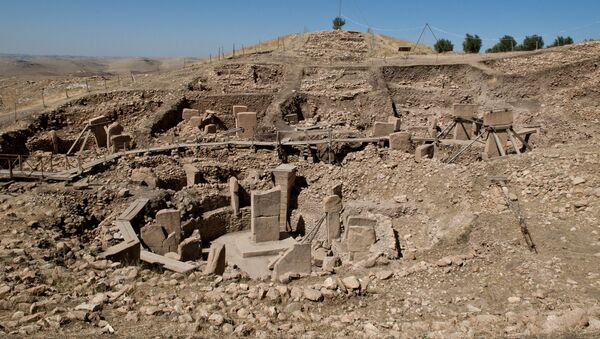A peculiar discovery was made by a team of Israeli archaeologists working at an ancient archaeological site known as Gobekli Tepe which is located in Turkey and whose first stage has been dated to between 12,000 and 11,000 years ago, Haaretz reports.
Having studied three of the oldest excavated enclosures at the site, archaeologists Gil Haklay and Avi Gopher of Tel Aviv University have uncovered what they believe to be a hidden geometric pattern – an equilateral triangle – underlying the architectural plan of the structures in question, leading the researchers to suspect that the structures were likely "planned as a single unit and possibly built at the same time", as the newspaper puts it.
"There is a lot of speculation that the structures were built successively, possibly by different groups of people, and that one was covered up while the next one was being built. But there is no evidence that they are not contemporaneous," Haklay said.
Their discovery seems to confirm the archaeologists' previous findings suggesting that architets during the Neolithic or even late Paleolithic eras were able to "apply rudimentary geometric principles" during construction and to "create standard units of measurement".
Also, the construction of the structures in question would've required hundreds of workers and might've marked the transition to a more stratified society, Avi Gopher pointed out.
"This is where it starts: The sharing instinct of hunter-gatherer societies is reduced and inequality is growing; someone is running the show – I don’t know if it’s shamans or political leaders, but this is a society that has an architect and somebody who initiates a project like this and has the power to make it happen," he explained.
The researchers also postulate that the geometrical pattern they've discovered reinforces the interpretation of Gobekli Tepe "as a cultic site", and that the aforementioned stratification also involved "a change in the perceived relationship between humans and nature", the newspaper notes.
"In Paleolithic art humans are rare, and this is true here as well, but you start to see change, the beginning of an anthropocentric world view in which animals and plants are no longer equal to humans but are subordinated to them," Gopher explained.


